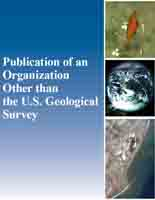Using Landsat imagery to detect, monitor, and project net landscape change
Links
- More information: Publisher Index Page
- Download citation as: RIS | Dublin Core
Abstract
Detailed landscape information is a necessary component to bird habitat conservation planning. The U.S. Geological Survey (USGS) Earth Resources Observation and Science (EROS) Center has been providing information on the Earth’s surface for over 40 years via the continuous series of Landsat satellites. In addition to operating, processing, and disseminating satellite images, EROS is the home to nationwide and global landscape mapping, monitoring, and projection products, including:
- National Land Cover Database (NLCD) – the definitive land cover dataset for the U.S., with updates occurring at five-year intervals;
- Global Land Cover Monitoring – producing 30m resolution global land cover;
- LANDFIRE – Landscape Fire and Resource Management Planning Tools–EROS is a partner in this joint program between U.S. Department of Agriculture and Department of Interior that produces consistent, comprehensive, geospatial data and databases that describe vegetation, wildland fuel, and fire regimes across the U.S.;
- Land Cover Trends – a landscape monitoring and assessment effort to understand the rates, trends, causes, and consequences of contemporary U.S. land use and land cover change; and
- Land Use and Land Cover (LULC) Modeling – a project extending contemporary databases of landscape change forward and backward in time through moderate-resolution land cover projections.
| Publication type | Article |
|---|---|
| Publication Subtype | Journal Article |
| Title | Using Landsat imagery to detect, monitor, and project net landscape change |
| Series title | All Bird Bulletin |
| Volume | Spring 2015 |
| Year Published | 2015 |
| Language | English |
| Publisher | NABCI |
| Contributing office(s) | Earth Resources Observation and Science (EROS) Center |
| Description | 5 p. |
| First page | 13 |
| Last page | 17 |


